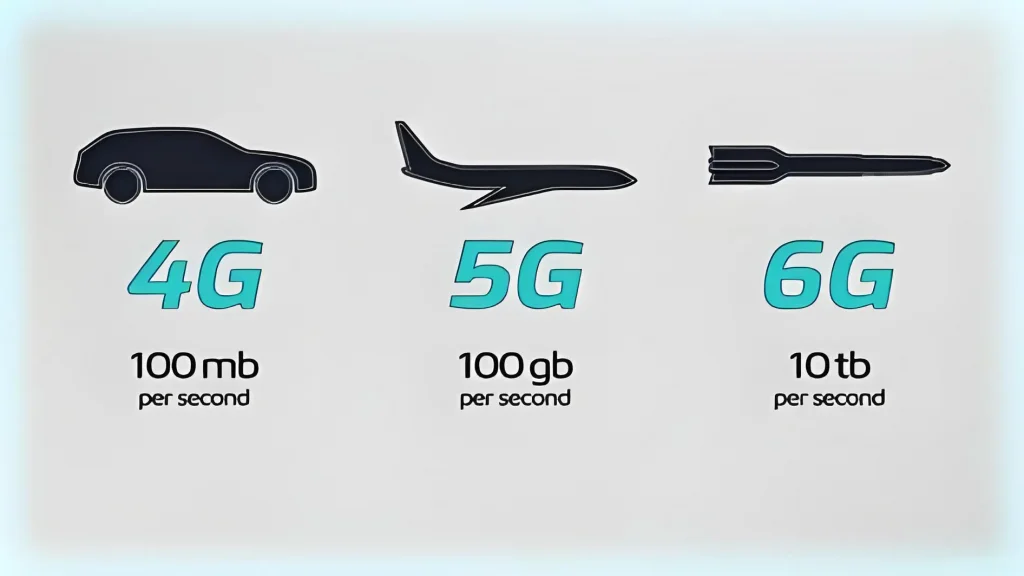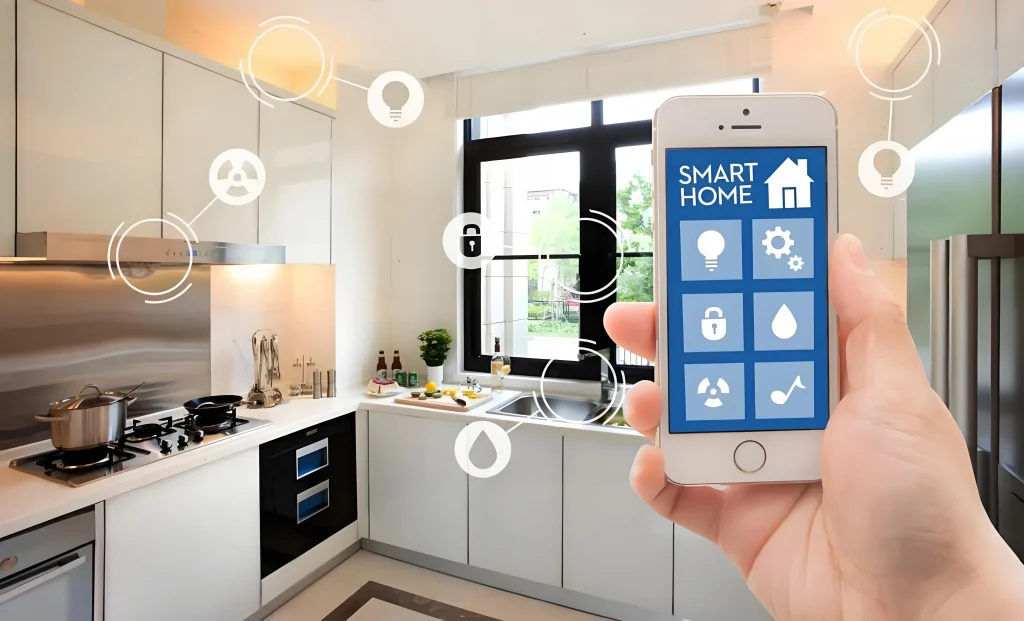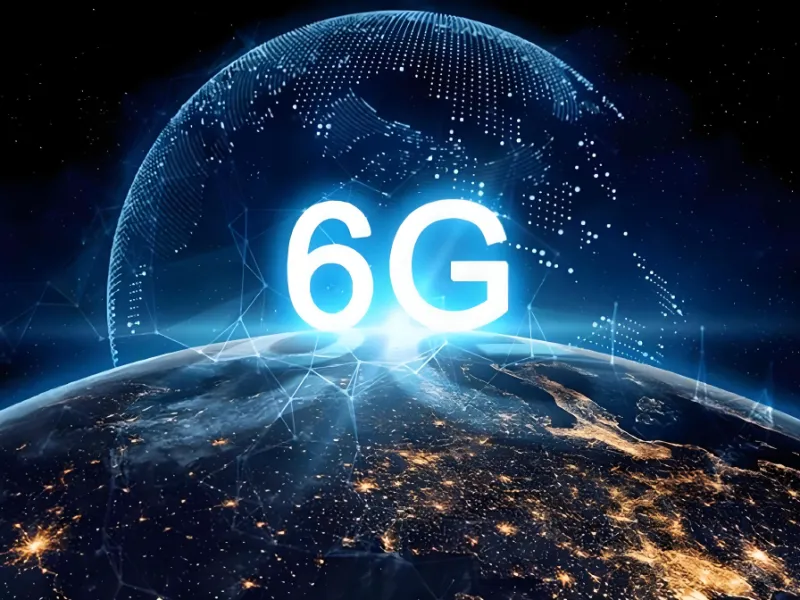- From 1G to 5G, and then to the emerging 6G, each iteration is not just about digital “+1”, but also a comprehensive transformation from technology to application.
- The standard latency of 5G is in the millisecond range, while the transmission latency of 6G is expected to reach the microsecond level.
OUR TAKE
6G, the magical “synesthesia internet”, not only makes the immersive experience as natural as breathing, but also changes our daily thousands of activities, big and small emotions: sitting at home, you can also blow the sea breeze of Maldives, touch the sand on the beach; Doctors in Beijing can operate on patients in Africa.
–Zora Lin, BTW reporter
Who among friends in the world’s largest 5G network has noticed the recent news? China has successfully built the world’s first 6G field test network that integrates intelligence and communication. In fact, the global competition for 6G technology has been in full swing for some time now! Next, let’s talk about what makes 6G so amazing, and why is it said to be more than just 5G “+1”.
Why is 6G not just faster than 5G
From 1G to 5G, and then to the emerging 6G, each iteration is not just about digital “+1”, but also a comprehensive transformation from technology to application.

The most intuitive upgrade to 6G is probably a qualitative leap in data transmission speed. In theory, 6G can increase data transmission rates to over 100 times that of 5G, reaching tens of gigabytes or even terabytes per second, “said Liu Guangyi, chief expert of China Mobile Research Institute. Downloading a 1GB movie in a 5G network environment takes at least 3 seconds. In the 6G era, this time will be compressed to less than 1 second or even 0.03 seconds.
Lower network latency is also one of the key advancements in 6G. The standard latency of 5G is in the millisecond range, while the transmission latency of 6G networks is expected to reach the microsecond level, which is one thousandth of the time it takes to blink an eye, “said Liu Guangyi. The leapfrog improvement in latency will greatly enhance the performance of many real-time applications.
What is even more exciting is probably the incredible fusion power of 6G. 6G will provide three types of fusion: the fusion of communication and perception, the fusion of communication and artificial intelligence, and the fusion of heaven and earth.
Compared to 5G, the number of connected nodes in 6G networks has greatly expanded, and the number of connected terminal devices will also increase exponentially. In the future, the objects connected by 6G will not only be humans, but also ubiquitous intelligent agents, robots, etc. “Liu Guangyi further explained that 6G networks, with their ultra-high connection density, can connect hundreds of devices per square meter, thus achieving deep interaction between the physical world and the virtual world.
Also read: Tech Mahindra and Northeastern University collaborate to accelerate ORAN and 6G innovation
Also read: 5.5G: A stepping stone from Huawei on the path to 6G
What will 6G change
When 4G emerged, the rapid popularity of mobile communication and smartphones brought countless mobile applications such as mobile navigation, mobile games, mobile shopping, and mobile payments, changing the way we connect with the world from multiple dimensions.
5G, which is faster than 4G, has changed not only the consumer internet, but also the industrial internet. It has fostered a new industrial ecology and business model, and accelerated the digital transformation of society. As of the first half of this year, 5G has covered 74 out of 97 major categories of the national economy, with an industry penetration rate of over 76%. Over the past five years, the commercialisation of 5G has directly driven a total economic output of approximately 5.6 trillion yuan and indirectly driven a total output of approximately 14 trillion yuan.
In the 6G era, we will witness an unprecedented, anytime, anywhere connectivity that reshapes our world, which we call the IoT. With such a connection method, human society is expected to move towards “digital twins” and “ubiquitous intelligence”, ushering in the interaction and integration of the physical world and the virtual world.
Liu Guangyi, Chief Expert of China Mobile Research Institute
The first internet wave connected computers, and the second internet wave connected people. The new generation of internet wave will connect everything more intelligently.
The premise of the intelligent connection of all things is ubiquitous connectivity. Ubiquitous connectivity has always been the core direction of the evolution of information and communication networks. We look forward to making communication networks accessible to everyone in the 6G era, making them a social core infrastructure comparable to hydropower, “said Liu Guangyi, Chief Expert of China Mobile Research Institute.
The ubiquitous connectivity brings about the intelligent connection of all things, which will achieve holographic interaction, sensory interconnection, and intelligent interaction, shaping the intelligence of production, the inclusiveness of public services, and the refinement of social governance. More intuitively, the interaction mode between humans, external objects, and even the environment will be greatly improved.
Now, we can awaken intelligent assistants in electronic devices through voice interaction. In the future, we will not only have visual interactions such as aerial gesture interaction, but also somatosensory interactions such as eye movement, and even emotional and brain computer interactions… 6G technology can make our five senses the starting point of interaction.
Liu Guangyi, Chief Expert of China Mobile Research Institute
When will 6G be integrated into our lives
The consensus in the development of the communication industry is to use one generation, build one generation, and research and develop one generation. At the time of large-scale commercialisation of 5G, it is also a time for countries to lay out the research and development of 6G.
To achieve ubiquitous connectivity across land, sea, and air, the construction and deployment of satellite ground networks are particularly important for 6G. Firstly, satellites and ground stations should be able to achieve stable and efficient transmission. Secondly, signal reception and processing capabilities should be optimised, and ground segment reception technology should be strengthened to meet the challenges of high-frequency communication. Thirdly, advanced satellite computing technology and enhanced inter-satellite link technology should be developed to enable efficient data transmission and collaboration between satellites.
To realise the large-scale application of 6G, artificial intelligence technology should be used to enhance the self-organisation ability of the network and ensure the intelligence of the satellite ground network.
Zhou Xin, deputy general manager of satellite manufacturer Micro Nano Star
Building such an integrated network of space, sky, and earth requires prioritising security. “Today, satellite internet has been used in a variety of scenarios such as intelligent driving, heaven and earth measurement and control, followed by a variety of potential threats, including signal interference and blocking, supply chain attacks, password security attacks, and so on.” Quan Xiaowen, chairman of Shengbang Security.
This is the only way to overcome core encryption technology, which is a top priority for 6G networking. Only by building a strong safety barrier can 6G lead us towards the intelligent new blue ocean filled with a sense of the future.
Pop quiz:
Which country first publicly proposed the concept of 6G?
A. Britain
B. America
C. China
D. France
The correct answer is at the bottom of the article.
What are future application scenarios of 6G
1. AR and VR: 6G will enable incredibly immersive AR and VR experiences with ultra-low latency and high-resolution graphics. This could revolutionise gaming, virtual meetings, and online shopping, making them more interactive and lifelike.
2. Smart cities: With 6G, smart cities will become even more efficient. Real-time data processing will optimise traffic flow, improve public safety, and manage energy consumption more effectively. Smart infrastructure, like adaptive street lighting and advanced waste management systems, will become commonplace.
3. Autonomous vehicles: 6G technology will enhance the communication between autonomous vehicles and their surroundings.This will improve safety and coordination, enabling more reliable self-driving cars, drones for delivery, and connected public transportation systems.
4. Telemedicine: Remote healthcare will advance significantly with 6G, allowing for high-definition video consultations, real-time remote surgeries with haptic feedback, and more accurate remote monitoring of patients’ health through wearable devices.
5. Smart homes: 6G will integrate home automation systems more seamlessly, enabling better control of smart appliances, security systems, and energy management. Homes will become more responsive and adaptive to occupants’ needs and preferences.

6. Education: Online learning platforms will benefit from 6G’s high-speed connectivity, offering real-time collaboration in virtual classrooms, interactive educational content, and personalised learning experiences that are more engaging and effective.
7. Enhanced connectivity for IoT devices: The IoT will see significant advancements with 6G, connecting a vast array of devices more efficiently. This will enable smarter homes, more responsive wearables, and better integration of various connected systems.
8. Advanced entertainment: Streaming services and interactive media will reach new levels of quality with 6G. Expect ultra-high-definition video streaming, real-time content rendering, and interactive media experiences that were previously not feasible.
9. Seamless connectivity in remote areas: 6G will improve connectivity in rural and remote areas, bridging the digital divide and providing high-speed internet access where it was previously limited or unavailable.
What are challenges for 6G
1. Technical bottleneck: 6G technology needs to solve more complex technical problems, such as higher spectrum utilisation and more complex system design.
2. Cost problem: 6G technology requires more complex equipment and higher technical costs, which will become a major challenge for the commercial promotion of 6G technology.
3. Security issues: 6G technology requires more powerful encryption technology to protect user privacy and data security, but it will also face more complex security issues.
The arrival of 6G technology will bring people more efficient, intelligent and secure communication methods. Despite the various challenges, I believe that in the near future, 6G technology will gradually be commercially available and bring us a better life.
The correct answer is A, Britain.

